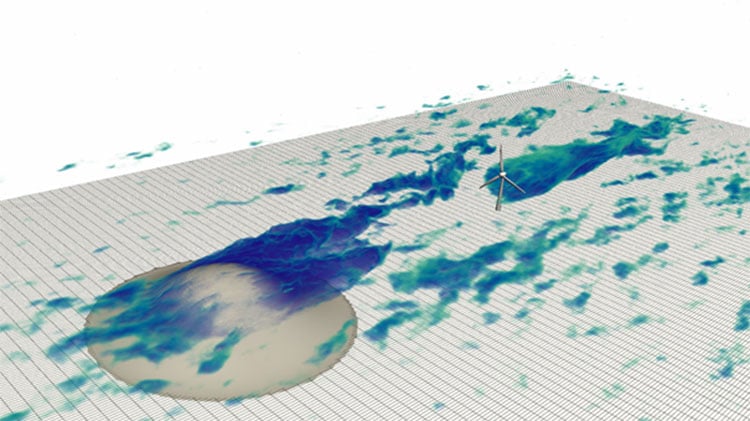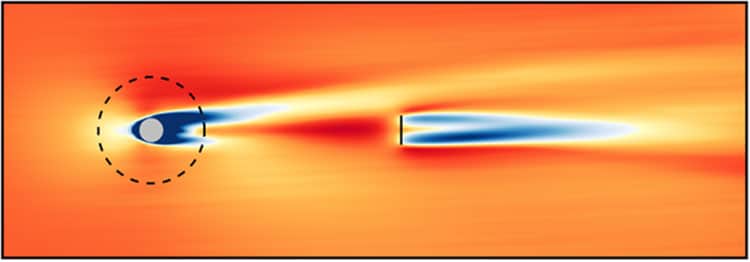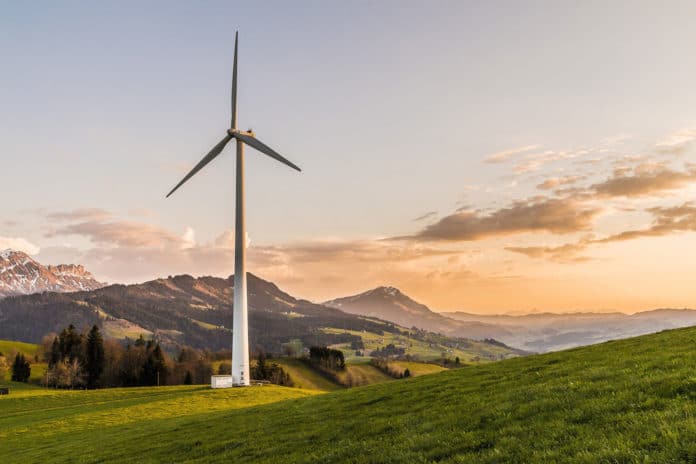As more and more wind turbines will be installed in complex terrains, it is crucial to study the effect of atmospheric stability on the performance of wind turbines in hilly terrain. This will help wind energy assessment and models that are used to optimize wind turbine siting.
Researchers from the University of Twente in the Netherlands have discovered that turbines nestled behind the hills can actually produce more energy than in a wide, open landscape. In a study, researchers used an aerodynamic modeling technique called large eddy simulation, which allowed them to simulate the effects of a three-dimensional hill on the performance of downwind turbines.
The team conducted simulations based on a 90-meter-tall turbine with 63-meter blades. The wind turbine is placed 756 meters behind a hill that is 90 meters high. The distance between the hill and the turbine is six times the turbine diameter, and the hill height is equal to the hub height.

“The wind speed immediately behind the hill is slower, which creates an area of low pressure,” explained the study author Dr. Richard Stevens. “This low-pressure area sucks in air from above, where the wind is much stronger than it is close to the ground. This means that a wind turbine does not need to be higher to take advantage of the strong winds at higher altitudes.”
“In addition, the wind above the hill blows in a different direction to the wind close to the ground. This causes the slow-moving air to bend away from the wind turbine, leaving the turbine behind the hill to benefit from the strong current,” Stevens says. These combined effects cause the wind turbine to produce up to 24% more energy than in the same conditions without the hill.

However, there are other factors that need to be considered. The simulations also show that the wind flow behind a hill is far more turbulent, which causes extra wear and tear on the turbines. Whether the added yield would outweigh the cost of any additional damage remains to be seen.
“For this particular situation, with only one hill, energy production is higher, but real-life terrain is much more complex,” Stevens notes.
